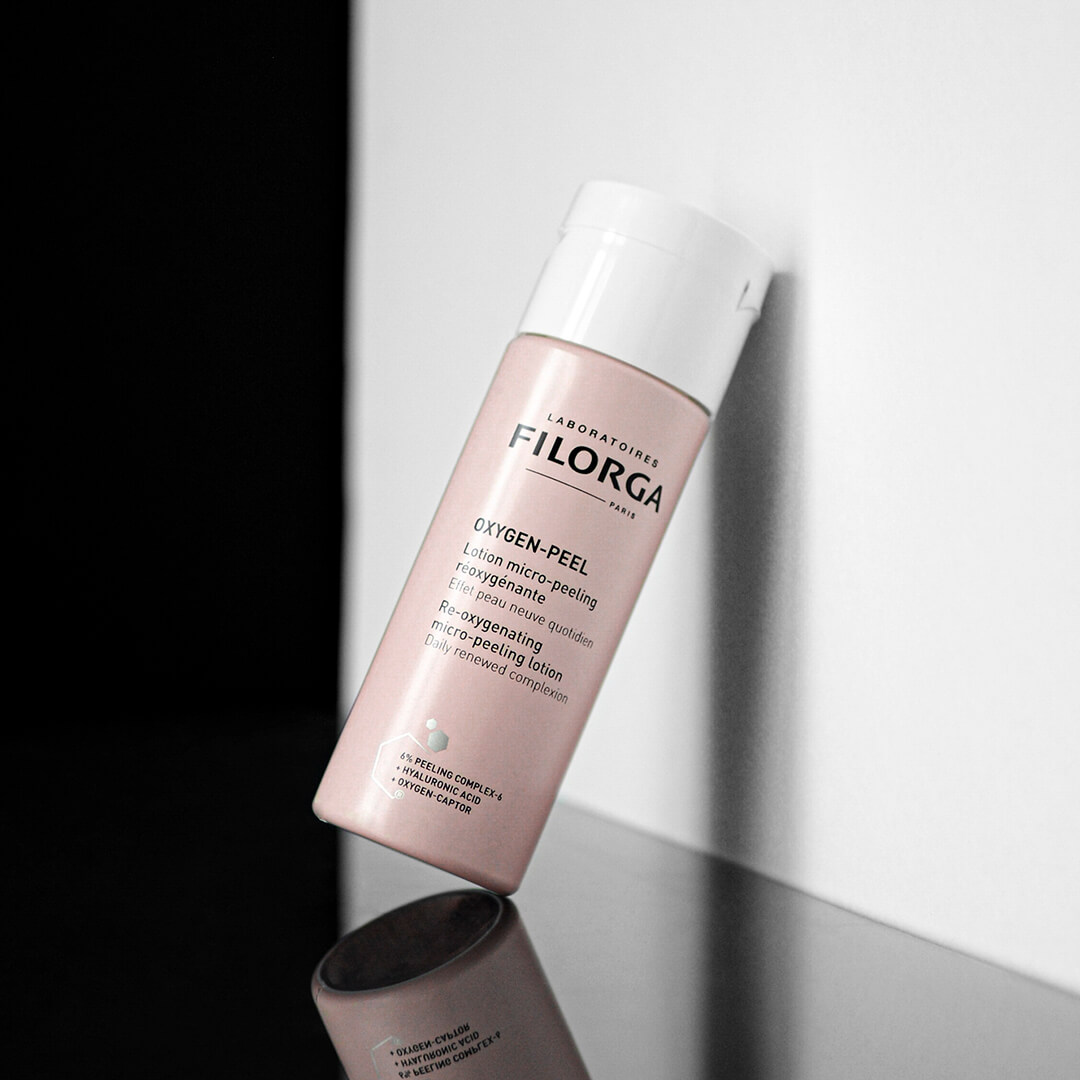
Everything you need to know about fruit acids and AHAs in cosmetics
August 18, 2025 - Ingredients
Fruit acids, also known as hydroxy acids, have established themselves as essential ingredients in facial skincare. Renowned for their exfoliating and rejuvenating properties, these active ingredients boast numerous benefits that improve the appearance and health of the skin. Let’s take a look at the details of these flagship ingredients in modern cosmetics.
What you need to know about the benefits of fruit acids
-
There are 3 different families of fruit acid: AHAs, BHAs, and PHAs.
-
Each has specific properties and uses.
-
Fruit acids are used to exfoliate, moisturize, improve skin elasticity, treat imperfections, smooth the complexion, and stimulate cell renewal.
-
They therefore help soften wrinkles and reduce the visible signs of skin aging.
The skin tolerance of fruit acids is generally good, but certain precautions should be taken when using them.
So what are hydroxy acids?
They are molecules found in nature, particularly in various fruits (hence “fruit acids”) or in other substances like milk. Although for cosmetic purposes they are often synthesized in the laboratory, their names derive from their natural sources: glycolic acid from sugar cane, malic acid from apples, and citric acid from citrus fruits.
In chemistry, the term acid refers to a particular structural grouping within a molecule. In other words, it’s not just a name for substances that can burn holes through things! Cosmetic acids feature different chemical structures, which means they can be classified into 3 main categories:
-
AHAs for Alpha Hydroxy Acids. The most widely known are glycolic acid, lactic acid, citric acid, and malic acid.
-
BHAs for Beta Hydroxy Acids. Manufacturers of skincare products primarily use salicylic acid.
-
PHAs for Poly Hydroxy Acids, such as gluconolactone and lactobionic acid.
So what are fruit acids actually used for in cosmetics?
Hydroxy acids are a precious ally for the health and beauty of our skin. Their numerous benefits make them prized ingredients in countless beauty products.
Exfoliating properties
The acids we’ve looked at break down the bonds between skin cells, helping to eliminate dead cells. This process improves skin texture, shrinks pores, and brightens the complexion.
PHAs exfoliate and moisturize the skin while reducing irritation, providing a gentle chemical peel for sensitive skin. This makes them an ideal choice for highly sensitive and delicate skin.
Moisturizing benefits
AHAs like glycolic acid and lactic acid retain water within the skin, helping provide hydration and plumpness.
This is not unlike the extraordinary properties of another acid, hyaluronic acid, which, while not a fruit acid, can retain up to 1,000 times its weight in water.
Anti-aging benefits
By boosting collagen and elastin production, fruit acids (AHAs in particular) stimulate cell renewal, helping reduce wrinkle depth and improve skin firmness.
Benefits for acne sufferers
Salicylic acid (BHA) is an especially effective treatment for skin imperfections and blemishes thanks to its anti-inflammatory properties and its ability to enter pores.
It’s fat-soluble (meaning it dissolves in fats like sebum), making it effective for treating oily or acne-prone skin.
Are AHAs and fruit acids bad for the skin?
Although highly effective, sometimes concerns are raised about the safety of fruit acids. However, if used correctly, these active ingredients are safe for most skin types. Nevertheless, there are a few precautions to be taken:
-
Potential sensitivity to sunlight. AHAs can increase the skin’s sensitivity to UV radiation. This means it’s crucial to apply sunscreen every day when using these products.
-
Potential irritation. At high concentrations, acids can cause rashes or irritation, especially on sensitive skin.
-
Be careful when combining products. Skin experts advise against mixing several products containing acids or retinol to prevent over-exfoliation.
-
Use them in the appropriate seasons. It’s best to avoid intensive use of acids during the summer when exposure to sunlight is greatest.
How FILORGA uses fruit acids in its cosmetic treatments
Putting safety and effectiveness first
Laboratoires FILORGA has built up extensive expertise in the use of fruit acids. To ensure our products are effective and safe for everyday use, we incorporate these active ingredients into our formulas in accordance with a number of strict criteria:
-
Optimal concentration. We fine-tune the concentration of acids to guarantee effectiveness while ensuring skin tolerance.
-
Suitable pH. The pH of our formulas is carefully calibrated to maximize the effect of the acids we use without compromising the skin barrier.
-
Specific methods for use. Every one of our products is designed with a specific procedure in mind (length of use, rinsing or not, etc.) to ensure optimal results.
SLEEP & PEEL 4.5: micro-peeling night cream
This night cream stimulates cell renewal for revitalized skin in the mornings. Inspired by professional chemical peels, SLEEP & PEEL 4.5 (https://fr.filorga.com/produit/sleep-peel/) combines the beneficial effects of AHAs and BHAs at 4.5% concentration with a soothing brown seaweed extract for its mild resurfacing benefits. For smoother skin with improved texture and a more radiant complexion.

OXYGEN-PEEL: the re-oxygenating cocktail
OXYGEN-PEEL is an exfoliating face lotion fortified with hyaluronic acid. Its unique formula contains 6 acids at 6% concentration that gently purify the skin, softening wrinkles and minimizing pore visibility for an optimal smoothing effect. This is rounded off by bioactive agents that boost cellular oxygenation, leaving the complexion renewed and radiant.

It’s important to note that these products can be used to prepare for a professional facial peel, thus demonstrating the close relationship between aesthetic medicine and Laboratoires FILORGA’s sophisticated cosmetic solutions.